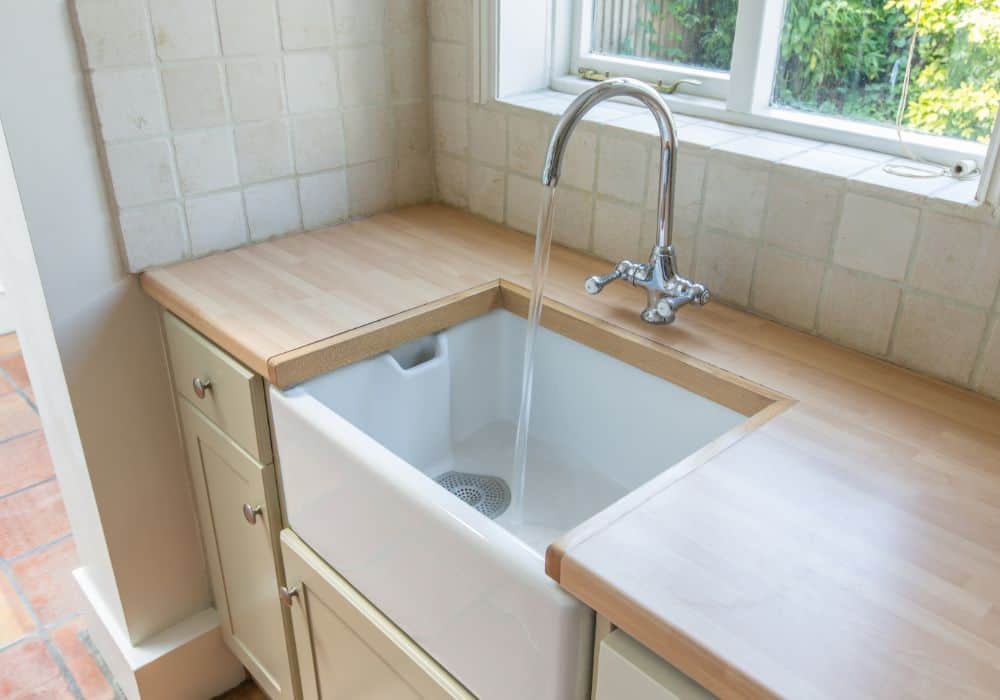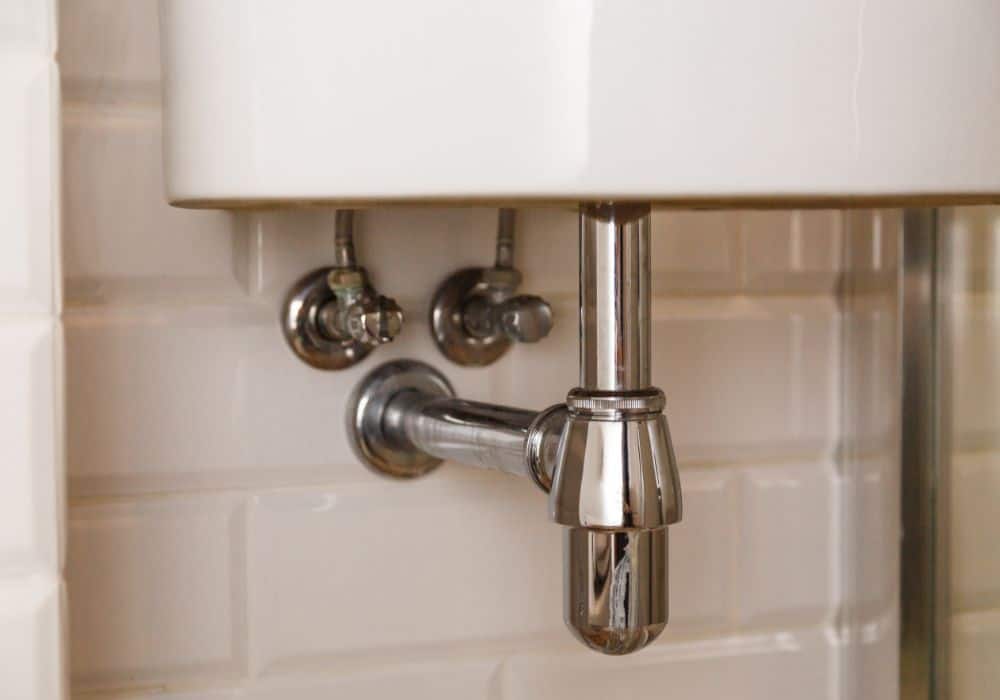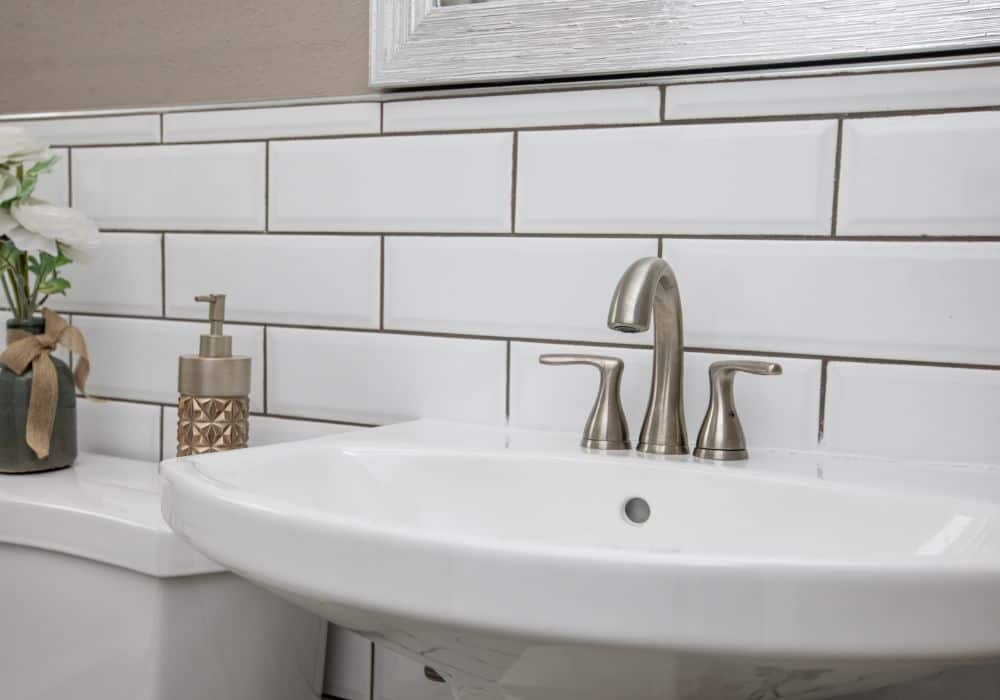Are you trying to install your home’s sink drains yourself? It is typically not easy, but knowing the correct measurements for each step helps you make the correct installation. However, what is the rough-in height for sink drains?
Let’s look at the correct rough-in height for a sink drain and the factors that affect it. You can determine what works for your house’s dimensions and whether or not your building passes an inspection.
The Correct Rough-in Height for Sink Drains
When a building is undergoing renovation or fresh construction, there is an inspection to check how much it adheres to the building regulations. At this inspection stage, the building is in the rough-in stage, and none of the pipes or plumbing fixtures are connected yet. This includes the sink drains.
So, if your sink drain installation does not meet the correct rough-in height, it may fail the prerequisite inspection. This inspection failure can lead to the loss of the building or drive a need to start the construction all over again.
The correct rough-in height for sink drains to pass the inspection is between 18 and 20 inches. Standard sink drains usually start from 24 inches and stop at 28 inches, so the rough-in height should be slightly lower than this height range.
You must allow room under the sink drain to accommodate the p-trap so it is not too close to the floor and encourages proper drainage. There is also adequate room for the cold water lines and hot water pipes to prevent crowding under the sink. You can always change the drain’s depth and height when fully installing it.
Measuring the Sink Drain’s Rough-in Height
While it is necessary to measure the rough-in sink drain height, it is equally as crucial to get the correct sink installation height. But before you can do that, you must choose the countertop height. That will inform the type of sink you choose, affecting its depth. Additionally, this affects the rough-in height.
So, to get the correct rough-in height, check the depth of the sink. Note the measurement on a piece of paper and check the full length from the top of the sink. Again, note it on the paper and check the width of the sink and the countertop space where the sink will fit.
Factors to Consider When Checking the Rough-in Height of a Sink Drain

Before getting the correct measurement for a sink’s plumbing rough-ins, you must consider some critical factors. Without them in mind, you can make a grave mistake and fail the inspection process.
1. Sink Size
When measuring the rough-in height for a sink drain, you must consider the size of your sink and the type for installation. Typically, the depth of your sink is eight inches, but this is not a general rule. Sink depth can be deeper than the standard measurement, and you may find some as deep as ten to twelve inches, especially if it is a kitchen sink drain.
While a deeper sink gives you more room to handle more dirty dishes and clean better than a standard depth one, it will tamper with the drain’s rough-in height. The deeper the sink, the lower the p-trap drops to the floor, which may reduce the rough-in height to sixteen inches from the floor.
That is if you choose to use the standard height for all counters. Higher counter heights can even out the rough-in height if the depth of the sink bowl is more than usual. We will get to the counter height factor later.
2. Connection of Pipes
The type of sink drain pipe connections you make may affect the rough-in height. Many sinks have pipe connections in the center under the sink, but some prefer moving the pipes to one side to make storage room for items around the house.
But the drain must not get in the way of other pipes, so you may want to measure its rough-in height with the pipes in mind. In most cases, the water pipes will go above the rough-in, which means they will be a few inches higher than the drain rough-in. Keep these in mind since the pipes typically hang about 20 inches off the floor.
3. Height of the Counter

It is important to note that different rooms have varying counter heights. For example, a kitchen counter is typically higher than that in a bathroom or any other room. The standard counter in a kitchen is 36 inches, but a standard bathroom vanity may only rise as high as 30 inches.
Consequently, the rough-in drain drops as low as the counter height goes. If you are installing a bathroom sink drain, the rough-in height naturally goes lower than that in a kitchen due to the counter height. In other words, the higher the counter height, the higher the rough-in height for the drain.
4. Location of the P-trap
Where the P-trap goes under the sink determines the drain’s rough-in height. The International Residential Code, under the International Code Council, says that the P-trap must hang at a maximum height of 24 inches below the drain.
Of course, this measurement depends on the sink’s base height from the floor. When measuring the rough-in height, you must ensure it is the correct height to ease the drain’s connection to the P-trap.
FAQs

1. Can You Install a P-trap Higher than the Sink’s Drainpipe?
A sink’s P-trap can go higher than the drain pipes, but it must not go lower than the pipe. The P-trap connects directly to the sewer to create an efficient drainage system. But if the drainpipe hangs above the P-trap, the flow becomes restricted.
The water gravity dislodges the water, interrupting its natural downward flow. In other words, the drain lines must have a somewhat lower height than the P-trap. If you want to increase the height of the P-trap under your sink, start by turning off the water faucet to cut off the flow while you work under the sink.
Measure the drain’s height with a tape measure or ruler to ensure the P-trap perfectly fits vertically. Cut off the excess from the pipe’s top when you have the correct measurement. The P-trap typically has some screws and flanges for the connection, so remove them to create openings.
Pull the P-trap toward the tailpiece and check the diameter. You can reduce the diameter if the connection is loose, but ensure you keep pulling until the connection is tight. Now, direct the p-siphon to position it above the drain hole until you achieve your desired height. Finally, tighten the screws and joints to create water-tight and necessary connections.
2. Can You Adjust a Sink Drain Height?
You can adjust the height of the sink drain, especially if the current height is likely to interfere with the drainage system. However, you must take accurate measurements of the drain and all accompanying parts.
Incorrect measurements can affect the adjustment and cause safety issues. You can employ the services of a professional plumber to adjust the height to the desired point if you are unsure of the steps or lack the skills.
3. Can You Check the Rough-in Height for a Sink Drain Yourself?
You can check the rough-in height yourself, but it is best to leave it to a professional contractor. Sink installation may look easy, but it can be tricky. Getting the correct measurements takes experience and a keen eye, so unless you have the training, hire someone with the expertise.
You must also consider the issue of a permit, depending on the area of residence. Some places require getting installation permits from the appropriate authorities and having a licensed plumber on hand to inspect the job. These are vital requirements to pass inspection.
Another reason you may need to use the services of a professional to get the correct rough-in height for sink drains is to get the job going according to your timeline. If there are delays in passing the inspection, you may find that you do not finish the construction or renovation job on time.
Checking the rough-in height means you want to install a new sink or replace an old one. That also means the drain may become clogged if you incorrectly measure the height. As mentioned, measuring the height requires a keen eye, and missing only an inch or two can change the drainage flow.
The materials you use for the installation also affect the rough-in height and sink performance in the long run. You must use the right piping material and pipe sizes to achieve your desired results. So, having a professional around the construction area ensures you have the correct fittings and materials.
Conclusion
The correct rough-in height for sink drains depends on several factors, but it generally is a minimum of 18 and can go up to 20 inches from the room’s floor. Before taking the measurement, ensure you check the location of the sink’s P-trap, the counter’s height, the sink’s size, and the pipe connections.
Then, you can take accurate measurements and correctly install the sink. Remember that you can always use a professional plumber for better results, especially if you need to obtain permits or pass an inspection.
